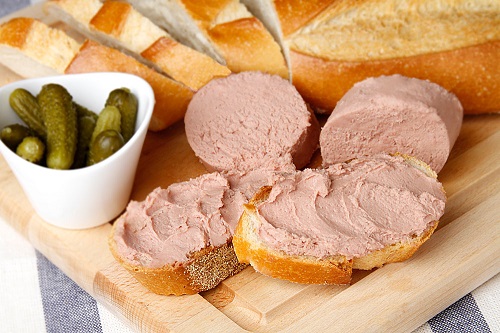German Liverwurst, or Leberwurst as it’s known in its homeland, is a culinary treasure steeped in tradition and flavor. This savory sausage, celebrated for its rich taste and smooth texture, is a staple in German cuisine and enjoys popularity worldwide. This article delves into the history, varieties, and culinary uses of German Liverwurst, offering insights for both culinary enthusiasts and novices alike.
The History of German Liverwurst
The origins of Liverwurst can be traced back to Germanic tribes, where it evolved from a practical method of preserving meat into a gastronomic delight. Over centuries, this sausage has become deeply ingrained in German culture, with each region developing its own unique recipe.
Varieties of German Liverwurst
Germany boasts an array of Liverwurst varieties, each distinguished by regional ingredients and preparation methods. The most common types include:
- Braunschweiger: Named after the city of Braunschweig, this variety is smoked and has a strong, hearty flavor.
- Berliner Leberwurst: Known for its fine texture and milder taste, it often includes herbs and spices for additional flavor.
- Pfälzer Leberwurst: Originating from the Palatinate region, it’s known for a coarser texture and a robust, spicy profile.
Preparation and Ingredients
Traditional German Liverwurst typically includes a blend of liver, pork, fatback, and a variety of spices such as marjoram, thyme, and allspice. The ingredients are ground, mixed, and then encased in either natural or synthetic casings before being cooked. Some varieties are smoked for added depth of flavor.
Culinary Uses
Liverwurst is incredibly versatile in the kitchen. It’s commonly spread on rye or whole-grain bread, making for a simple yet satisfying sandwich. It pairs exceptionally well with pickles, mustard, and onions. Beyond sandwiches, liverwurst can be included in charcuterie boards, used in stuffings, or even blended into spreads and dips.
Nutritional Profile
Rich in protein and essential nutrients like iron and vitamins A and B12, German Liverwurst is a nutritious addition to any diet. However, it’s also high in fat and cholesterol, so moderation is key.
German Liverwurst is more than just a sausage; it’s a symbol of cultural heritage and culinary craftsmanship. Whether you’re a seasoned aficionado or a curious foodie, exploring the world of Liverwurst is a journey through taste and tradition. Its rich flavors and versatile uses make it a beloved ingredient in kitchens around the globe.
Ingredients:
1 1/2 kg 80-85% lean pork shoulder
900 g fresh (or fresh frozen) pork liver
1 medium onion, grated
2 tablespoons salt
1 tablespoon fine ground black or white pepper
1 teaspoon allspice
1 teaspoon dried marjoram
1/2 teaspoon ground sage
1 cup ice water
sausage casings (natural pork or collagen)
Directions:
- Cut the liver into easily handled pieces and simmer it in about 2 cups of water. The liver should be cooked but still be slightly pink inside.
- Cut the pork into 1 inch cubes.
- Pass the liver and pork through the fine plate of your meat grinder at least twice. You want a very finely ground mixture.
- Combine the spices in a 1 liter container and mix with the 1 cup of ice water.
- Pour the spice and water combination into the ground meat and mix thoroughly for at least 2 minutes. Use your hands for mixing to assure even distribution.
- Once the sausage is fully mixed, stuff it into 38-42 mm natural pork casings or comparable collagen casings.
- Simmer the stuffed sausage in water just below the boil until the internal temperature reaches at least 152 degrees F (66 C).
- Once your liverwurst has finished cooking, cool it to room temperature and package it. It will keep well in the refrigerator for a week and freezes nicely.
Related Recipes:
German Wurst Guide
Bratwurst
Mettwurst
Classical German Sausage
German Sausage with Apples Sauerkraut and Onion
German Sausage Soup

